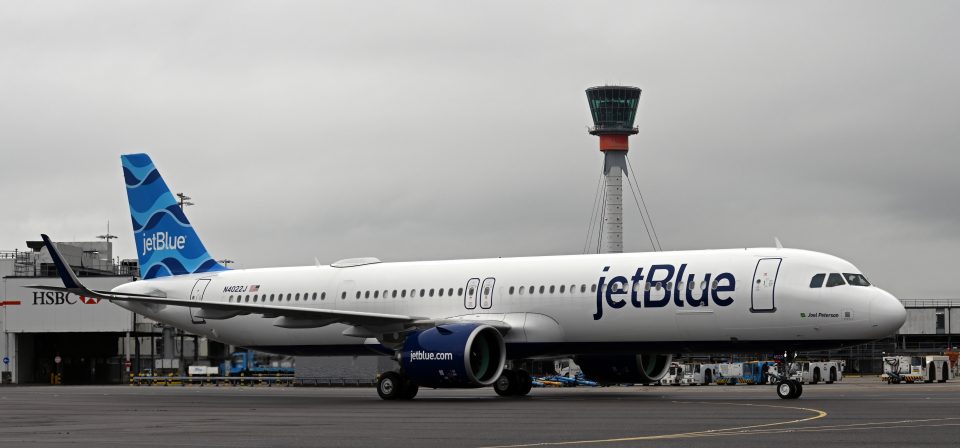The new carriers looking to shake up transatlantic air travel
After nearly 15 months of closed borders and grounded planes travellers have flocked back to airlines, desperate for a taste of pre-pandemic life.
But though short-haul flying has bounced back relatively fast, the long-haul market remains a shadow of its former self.
For no market segment is this more true than the transatlantic market, one of the crown jewels of global aviation.
Thus far, despite repeated pleas from UK and European leaders, Us President Joe Biden has remained resolute, keeping a travel ban on non-Americans in place due to the spread of the “Delta” variant of Covid-19.
When, however, the transatlantic market returns in full, it will have a different look. After years of rapid growth the pandemic put paid to Norwegian, which emerged from restructuring shorn of its once much-envied long-haul business.
Back in 2019, before the pandemic struck, Norwegian and its UK subsidiary held around five per cent of the transatlantic market, with a combined 1.9m flights over the period between January and September, data from analysts Cirium showed.
Almost no sooner than it bowed out, two new players staked their claims to fill the gap Norwegian left behind.
The first, JetBlue, will need little introduction to US passengers. Dubbed “New York’s local airline” by some, the carrier is the seventh biggest player in the North American market, flying to over 100 destinations in the US, Caribbean and Latin America.
At the other end of the spectrum is Norse Atlantic Airways, a new carrier set up by Bjorn Larsen, and backed by shareholders including Bjørn Kjos, the founder of Norwegian. It will make its first flights in 2022.
Although the company has repeatedly tried to distance itself from Norwegian, the combination of its staff and business model – the same low-cost, long-haul approach championed by the other carrier – have stuck.
‘Real challenge’ for Norse Atlantic
Some, it is fair to say, are sceptical that the new carrier can make the approach work.
“There’s no example of an airline which has made low-cost, long-haul work sustainably over a long period”, aviation consultant John Strickland told City A.M..
“The transatlantic market has long been seen as a pot of gold but for many airlines it has been a disaster. Big players who can sustain flying all year round and tap into the lucrative business class market do fine, but it’s a real challenge for those airlines which just go after price.”
Speaking to City A.M., Norse Atlantic chief executive Larsen said the carrier would focus on the premium economy segment and leisure segments.
“We are the only pure player in this particular segment, so our target group is not the same as our fellow airlines”, he said.
Aviation analyst Chris Tarry said that this was an area where Norwegian had fallen down. “At the end of the day you’re looking to have the richest possible traffic mix on your aeroplane”, he said.
“In my view, the fundamental problem with Norwegian was that it didn’t have enough premium seats. It didn’t get it right in earlier iterations, but let’s see if they can do it this time.”
Even with this in mind, for many launching an airline now, with the market as it is, is a counterintuitive move, but Larsen insisted that it was the “best possible” time to do so.
Before the Open: Get the jump on the markets with our early morning newsletter
“If there ever was a time to establish an airline in this segment, for a number of reasons it would be now”, he said.
“First of all the availability of competitive and more environmentally friendly aircraft has never been better, and we were able to secure aircraft at very competitive terms.
“Secondly, we have flexibility to start the operation when the market gets back, which we think will happen sometime in spring next year. We certainly need the coronavirus to be behind us and those travel restrictions lifted, but we have flexibility to go on beyond that, if required.

“And thirdly there was an abundance of people that wanted to come work for us to create this new airline focusing on a new segment creating comfortable rides for passengers in Europe and America at very affordable fares.”
After starting flying next spring, Larsen said he hoped the airline’s 15-strong fleet would be flying at full capacity in 2023 and 2024.
‘As good as time as any’ for JetBlue
By contrast JetBlue, which made its inaugural transatlantic flight from New York’s John F. Kennedy International Airport (JFK) and London Heathrow Airport (LHR) last month, is entering the market from a completely different position.
“US carriers are all in a better position than their European counterparts because they’ve got such a strong domestic market which at the moment is largely back to normal”, said Strickland.
And unlike Norse Atlantic, which will fly the larger Boeing 787 jet, JetBlue will fly the Airbus A321LR, which has around 150 seats, which will be easier for it to fill from its existing networks, he added.
Add in the strength of JetBlue’s brand on the other side of the Atlantic and the picture is a far brighter one than for Norse Atlantic, Strickland said.
“They’ve obviously got to work hard to establish themselves over here but if there was anytime for a newcomer to come in and offer a good product at a much lower price it would be now.”
One thing is for sure, said Tarry – it’s all good news for the passenger.
“With someone coming into the market there is always a fare fight, and it’s the one with the deepest pockets who survives. It’s not a good business premise, but it’s usually good for consumers.”